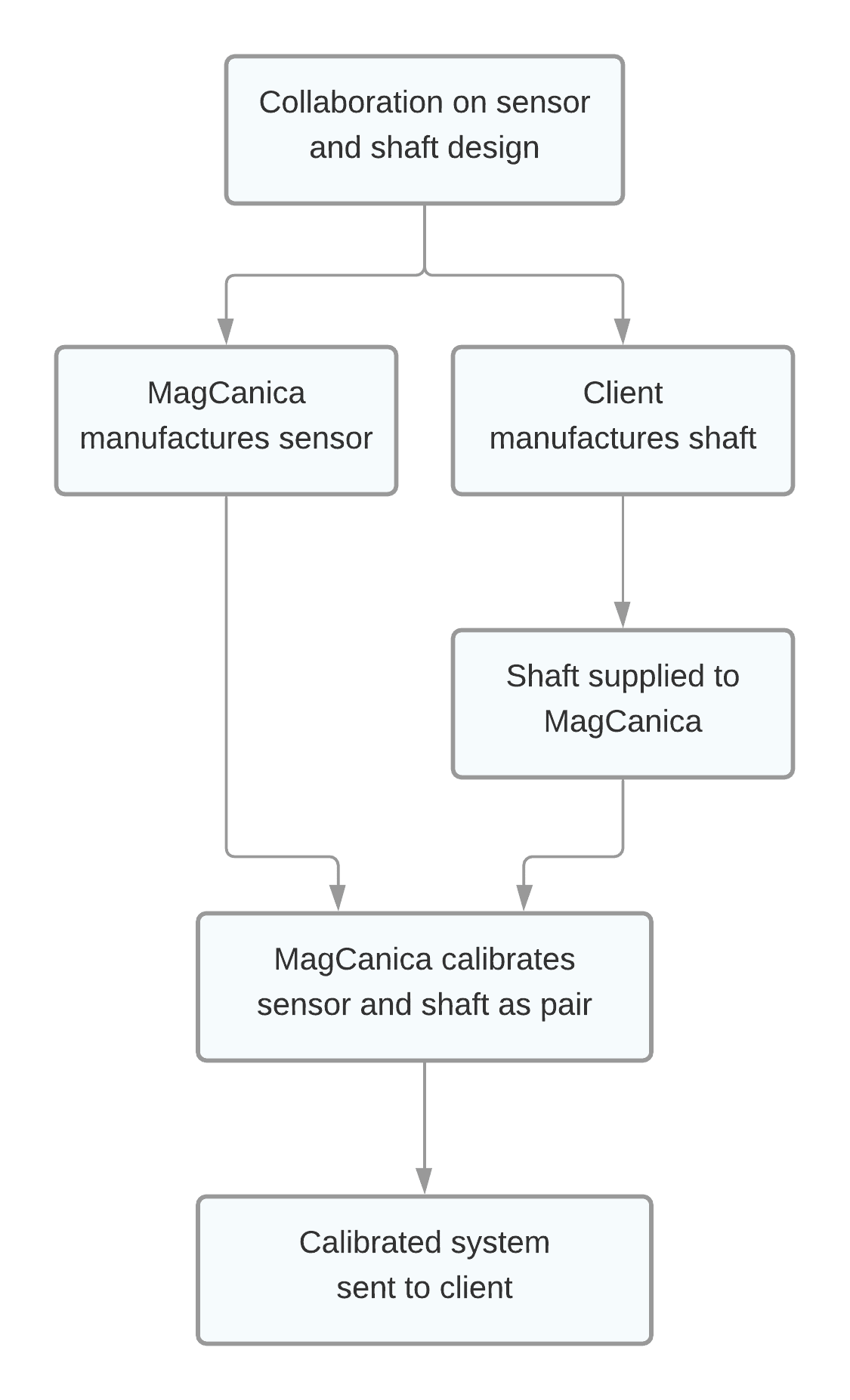
Shaft Design Requirements
The technology practiced by MagCanica is well suited to be tightly integrated into the final installation given that the shaft that transmits the torque is the primary transducer. Because of the fact that the torque sensor system leverages the shaft that transmits torque as the primary transducer, when discussing a new application with MagCanica, the shaft characteristics and operating stresses are the top priority. These topics include:
- The chemical composition of the existing shaft material.
- The maximum torsional stresses that will be applied, or effectively the maximum rated capacity of the torque-transducer.
- Whether or not modifications can be made to the existing shaft if it does not meet the requirements of the transducer.
While the materials that work well with the torque-transducer are common in the automotive and aerospace industries, it is not common that the existing shaft is both made of such a material and has an appropriate geometry for the torque-meter. It is more common that certain local geometric modifications are required and a custom shaft has to be manufactured.
It is difficult to provide a definitive list of materials or immediate answer as to whether a particular shaft will work for a given application; however there are several basic trends that can be used to provide an initial assessment. The chemical composition of the material requires at least a small percentage (>2%) of Nickel and / or Chromium. As these percentages increase, so does the magnetostriction (to a point at which it starts to decrease and then actually invert). The increasing magnetostriction increases the sensitivity of the transducer to applied torque, while also limiting the peak stresses the materials can tolerate in order to maintain ideal magnetoelastic characteristics. Additional factors that have a significant impact include the heat treatment, surface treatment, and specific shaft geometry. We have 20+ years’ experience assisting with the choice of materials, heat treatments, and geometries. Please consult with MagCanica for help assessing whether a material is suitable or help choosing the best material for a specific application.
Custom Sensor Design and Delivery Process
Once the material and stress range are agreed upon, the typical steps towards designing and delivering a torque-meter are as follows:
- During the design phase MagCanica works with the client to:
– Ensure local region on shaft is sized for torque measurement.
– Design a sensor housing that is appropriate for the installation.
- MagCanica designs and manufactures the sensor and electronics.
- The automotive OEM or its chosen supplier manufactures the shaft which is sent to MagCanica for instrumentation.
- The shaft is magnetized by MagCanica and paired with the sensor and electronics.
- The system is fully characterized under all expected operating conditions (e.g. position, temperature), and a final calibration is obtained.
- The full system consisting of the magnetized shaft, sensor, and electronics (including onboard firmware) are returned to the client as a matched system.
- MagCanica prides itself on outstanding service and turnaround time (usually limited only by the time needed to manufacture the shaft).
- Typical automotive applications can be completed in 8-12 weeks.
- High level of attention to detail and experience with international shipping within MagCanica’s operations department.

